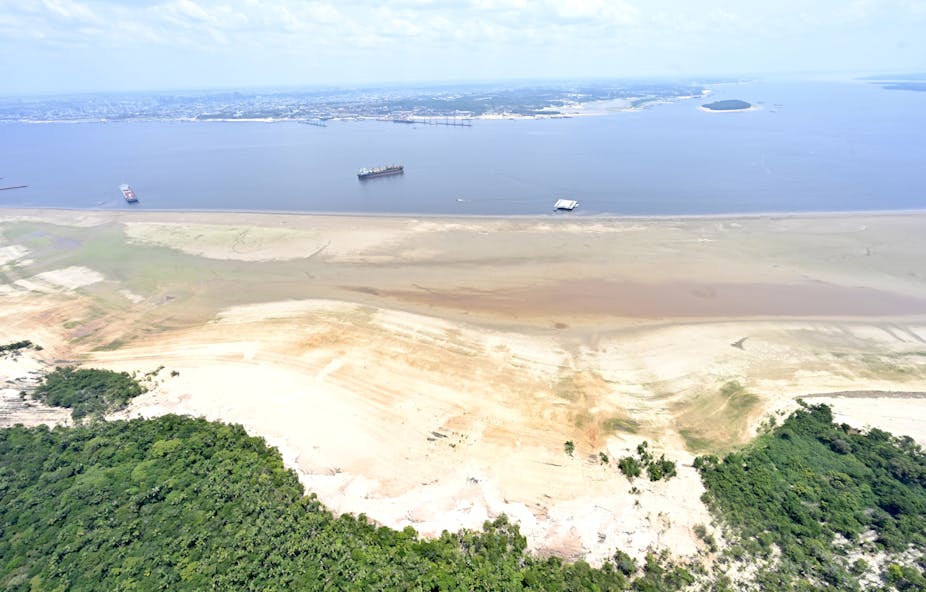Home to the greatest biodiversity on the planet, the Amazon is also a ticking time bomb for the emergence or resurgence of diseases with pandemic potential. This is because environmental degradation and altered landscapes are important factors in this process, which are exacerbated during periods of extreme drought, such as the one now affecting the region.
In the Amazon in particular, the paving of the BR-319 highway, linking Porto Velho to Manaus, is a significant source of concern. Conservative estimates predict that deforestation around the road will triple in the next 25 years, mainly due to land speculation. This is made worse by the fact that 90% of the area directly affected consists of untouched forest.
And deforestation is not a static situation, but dynamic and unpredictable, resulting in the fragmentation of forests, increasing the risk of fires and reducing the biodiversity of the affected areas. The association between human action in the Amazon, climate change, disorganised migration and precarious social development creates a favourable environment for the emergence and resurgence of diseases, it has been shown.
Known diseases…
This process can happen in different ways. The degradation of conserved areas and the diversion of rivers and extreme drought, can, for example, lead to water and food shortages. And this poses a direct threat of malnutrition, affecting the health of local populations and leaving them more vulnerable to known diseases.
Lack of clean water and poor hygiene in drought conditions also increase the risk of diseases transmitted by contaminated water and food, such as cholera and hepatitis, and viruses that cause severe diarrhoea, such as rotavirus. Making matters worse, the incidence of diseases associated with poor fish preservation, such as rhabdomyolysis (black urine disease) - which is not infectious - also rises during extreme droughts.
Global warming is also a critical factor in this process, allowing an increased presence of mosquitoes that transmit diseases such as malaria and dengue fever. An increase of just a few degrees in the planet’s average temperature can allow them to colonise areas that were previously inaccessible. In regions where they are present, environmental degradation can increase or decrease rainfall periods, favouring flooding and the maintenance of standing water, and facilitating their proliferation.
Not surprisingly, vector-borne diseases are classic cases of outbreaks due to environmental imbalance. The recent humanitarian crisis of the Yanomami, a tragedy caused by illegal mining, land grabbing and lack of access to health services, is a case in point. In addition to the contamination of water and the environment by mercury, mining activity has created a favourable environment for the reproduction and spread of mosquito species of the genus Anopheles, the transmitter of the protozoan that causes malaria.
This is because digging ravines to extract gold and minerals creates pools of water that act as artificial breeding sites. In addition, mining activity increases the human population in these remote regions, which facilitates the spread of malaria. In numerical terms, while between 2008-2012 around 20% of malaria cases occurred in Yanomami territory, between 2018-2022 almost 50% of cases affected this population.
… and new diseases
Zoonotic diseases (transmitted from animals to people) present an even greater potential problem. While some pathogens (disease-causing agents such as viruses and bacteria) are capable of infecting one or a few host species, others are more generalised and can, if there is contact and opportunity, infect a wide variety of animals.
This type of “jump” from one host to another occurs constantly among animals in their natural habitat, for example from bats to non-human primates, small rodents and other mammals. However, there is usually a balance in the circulation of these agents.
But when habitats are destroyed, for whatever reason (human or otherwise), local species migrate to more conserved areas in search of food and shelter. And this can lead them to areas close to human settlements – and facilitate contact between wild animals and people.
Impossible to predict, but possible to monitor
Unfortunately, preventing zoonoses is not an easy task – is no effective method that can predict what the next emerging disease will be, or from where it will emerge.
But it is possible to keep an eye on it. To do this, we monitor the circulation of resistant viruses and bacteria in samples of water, animals and vectors, as well as humans. Animals such as bats, rodents and primates are subjected to next-generation sequencing technologies for early detection of circulating agents that could pose a threat to human health.
And yet it’s not enough. To be effective, surveillance must be constant and cover local and national levels. Although Brazil has the capacity and basic technical infrastructure for this, few actions are actually implemented. In addition to surveillance, we need investments in faster and more accurate diagnostic methods that can help contain the spread of potential new diseases with pandemic potential.


